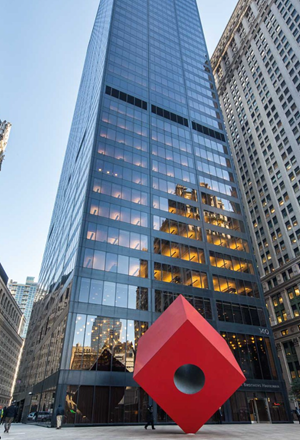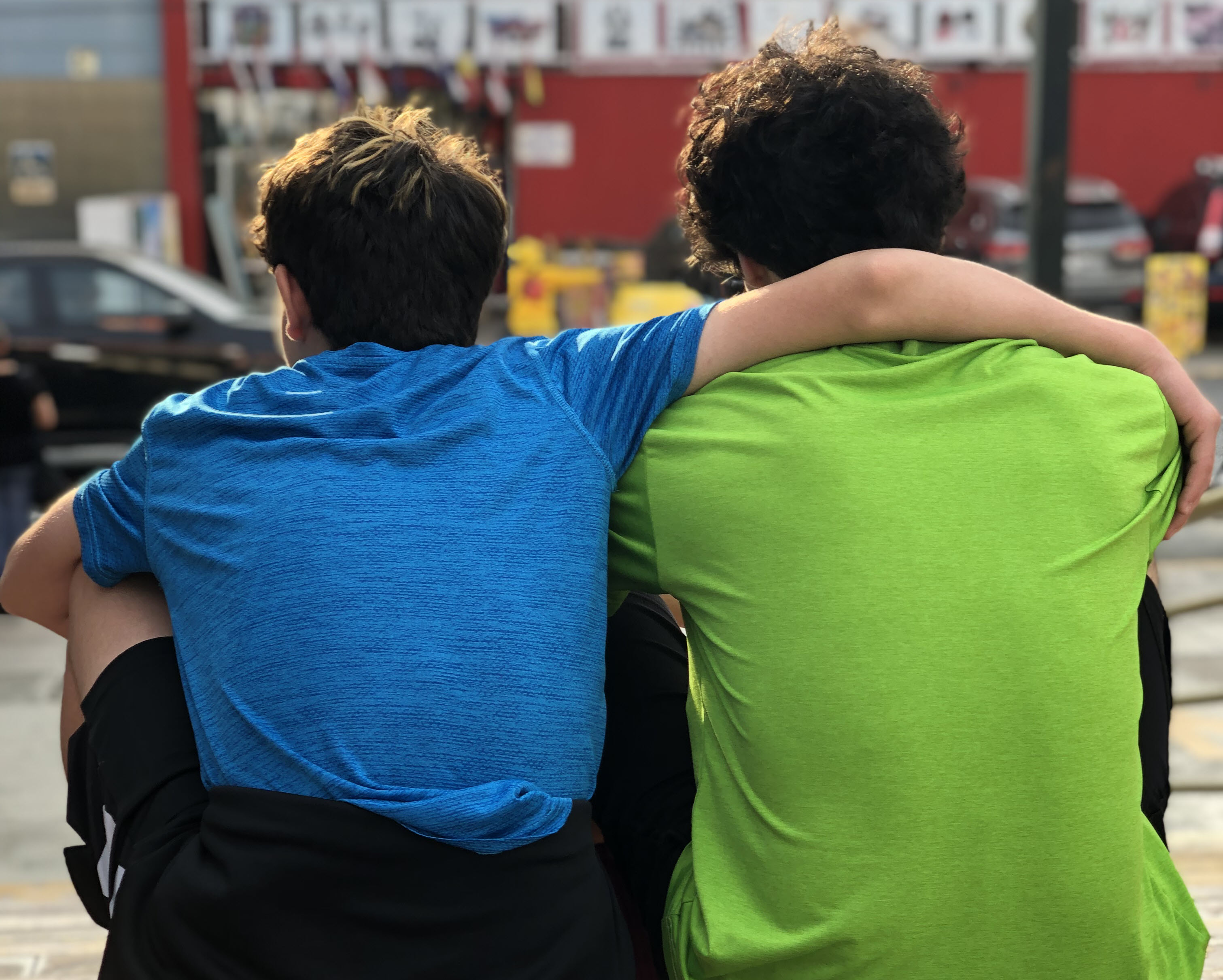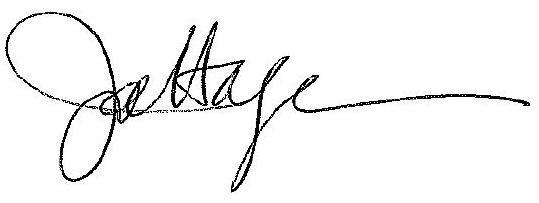Updated for 2022!
Funny story.

When I got into Wharton in 1990, I needed to buy my first personal computer. They were expensive! I asked Joe Narciso for advice.
Joe had begun a side hustle with an outfit called Panda Computers. He assured me a Panda was just like a Dell, Compaq, or HP – and it was only $2,000!
I was sold.
(You know where this is going, right?)
The computer had problems. Maddening, productivity-crushing problems.
I called Panda and it became increasingly obvious they were a two-person, poorly equipped reseller. I told Joan about the problems. I called frequently. She knew me by name.
Having exhausted her knowledge, expertise, and resources, she declared the meme-worthy punchline I’d echo for decades to come:
I don’t know what the hell else to tell you, Joseph.
It still makes me laugh: Customer Service was reduced to an equally exasperated 50-something woman.
She didn’t know what the hell else to tell me.
Things are getting very hard, very fast.
Another Marine Midland-era story.
I was part of the Marine Midland FASTPRO program. It was designed to attract college-level graduates who otherwise might consider a more prestigious career across the street at an investment bank.
Indeed, I was among those who wanted a more prestigious investment banking career. I would have taken almost any offer.
It never came.
So there I was at Marine Midland Bank in the Financial Associate Specialized Training PROgram and became fast friends with Tim. We both enjoyed chess and played during lunch sometimes.
We’d go to the MMB cafeteria, bring our lunch back to my desk, eat and play.
We joined a little-known chess club of sorts run by a veteran employee named John. John was a vastly better player.
His catchphrase, when demonstrating how we’d be crushed in three moves, was, “Then things are getting very hard, very fast.”
Things ARE getting very hard, very fast.
Today’s ‘thing’ is medical device marketing in 2022.
Getting attention. Getting attention has gotten very hard, very fast.
Clients ask, “How can we build awareness?” I reply, first you need a value proposition so great it forces your ideal customer to stop what they’re doing and seek more information.
Then we must put the compelling story where they’ll discover it.
Where is that, they ask. But they already know the answers and the associated problems. They’re just hoping I have a better answer.
I don’t.
Ranked by Effectiveness
- Word of mouth. Nothing better. Hard to earn and impractical for most startups.
- First connections. I hope you’ve been making connections on LinkedIn. And perhaps you actually know them, at least somewhat? ????
This’d be a good time to write them. Apologize for having been out of touch. Ask them how they’ve been. That’s it. Don’t ask for anything. Wait until they answer and ask you, “How’ve YOU been?” Then you can make your ask.
How’d you like access to 60,000+ first connections?
-
Organic web traffic. If you can get on Page One on Google, you’re amazing and deserve all the traffic you get. Organically, when a search engine calculates yours is the Very Best Answer for their query? You better be a hell of a writer! And prolific. And other sites have linked to your content.
-
Search engine marketing. You bid and pay for eyeballs or clicks. Pay enough, you might be the very top result with the
or qualifier. Buying your way to the top of the search can be expensive, indeed!
-
Trade shows and exhibitions. Yes, these can be great. And greatly expensive. And risky: How often have you been disappointed with trade show results?
-
Speaking engagements. Yes, ideal! Who will speak? Will the message educate, entertain, and/or persuade? Will you send a “key opinion leader?” Will the conference host charge you to speak? Will the key opinion leader?
-
Sponsorships. Those nice people who paid content creators so you could listen for free? I know it builds awareness and know of some that generate business. If you go this route, ask for examples how previous sponsors were integrated into the content. If it’s just “this message brought to you buy…,” it may not be enough. If the thought leader extols your virtues, well, maybe.
-
Editorial coverage. Excellent, if you can get it, it’s well written, and your ideal customer reads that publication.
-
Email. An email from you? If they don’t know who you are, will they open it?
How did you get their name? Research takes time and money. Buying a list takes money. Paying for distribution takes money. And will a cold email be enough to elicit a response?
-
Social media. Are your customers on LinkedIn? If they are, are you connected to them? If you are, how likely is it they’ll see what you put there?
Of course, you could buy your way to the top and pay to promote your message on LinkedIn or Facebook or Twitter – if they will see it there.
Perhaps your customers don’t go there. Where are they? We could ask Katrina, my media planner. How confident are you in social media?
-
Podcasts. New addition for 2022. I kind of put it in the “social media bucket,” but there’s enough noise about them they deserve their own line item. Allegedly.
-
Telemarketing. Not all outbound telemarketing is bad. In fact, I know someone who’s profoundly good at it for medical device companies.
I have a really good script. Ask me for a copy.
-
Upselling. Yes, all day long! An effective customer care team is worth its weight in gold. But if you’re reading this article, chances are you lack the inbound calls in the first place.
-
Key influencer marketing. Paid? Earned? Delivered with enough frequency and reach?
-
Networking. Sure, but it’s not scalable and I can’t do it for you.
-
Brochures to leave behind. Sure. Let’s make you nice collateral material. Will they, by themselves, raise awareness? No.
-
Referral programs. For service providers, yes. I don’t know manufacturers who’ve tried them. One way could be a “ride-along” piece of collateral inserted in someone else’s shipment or invoice.
-
Print. I haven’t had one client in seven years buy a print ad. Anywhere.
-
Physical mail. I haven’t had one client in seven years do a physical mailing.
-
Traditional media. I haven’t had one client in seven years use TV, radio, outdoor, or Yellow Pages.
-
Banner ads. Yeah right.
-
Something else. Wha’d I forget?
Well, Joe, what do you recommend?
Well, let me ask you: Which of the above gives you the most confidence?
Because those are the choices. None guarantee success. None are easy.
And I don’t know what the hell else to tell you.
+++
My new favorite photo
Taken in December 2018. Twelve years after this photo.
Fast Round
-
This is troublesome. An emerging trend where you win the top spot and still don’t earn a click. Shared weeks ago on LinkedIn. Are we linked? (Mention you’re a Journeyer.)
-
This marketoonist cartoon. A timely cartoon from the author of “Your Ad Ignored Here.”
-
This short Onion video. U.S. Healthcare Administrative Costs by the Numbers.
Thank you for joining me on The Journey.
A happy and safe holiday ???? to you,
P.S. Are you doing anything special between now and New Year’s? Write back and tell me! ????



